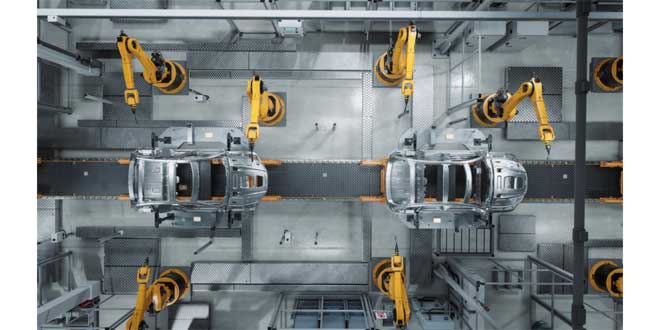The electric vehicle industry has undergone significant growth over the past few years, with demand skyrocketing due to increased concern over carbon emissions and global warming. In the United States, the sale of electric vehicles has grown considerably, with figures from the National Renewable Energy Laboratory indicating that approximately 1.5 million electric vehicles were on the road in 2020. This growth has, in turn, driven the adoption of new technologies that make electric vehicles more efficient and safer to operate, such as millimeter-wave radar systems.

Millimeter-wave radar systems are used in electric vehicles for various purposes, including detecting objects on the road and providing information to the driver about the car's surroundings. These systems are composed of multiple components that require precise laser marking to ensure their functionality and durability. Laser marking is the process of applying a permanent mark to an object using a laser beam. In the electric vehicle industry, laser marking is used to label and identify millimeter-wave radar components, such as connectors, capacitors, and resonators.
Laser marking is essential in the production of millimeter-wave radar systems because it provides a permanent and legible marking that is resistant to wear and tear. Markings made with ink or paint can rub off or fade over time, making them ineffective at identifying specific components. Laser marking, on the other hand, produces markings that are resistant to damage from abrasion, chemicals, and UV light, ensuring that they remain visible and legible over the life of the component.
Another advantage of laser marking is that it is a non-contact process, meaning that it does not touch the surface of the component, reducing the potential for damage or distortion. The laser beam is directed onto the surface of the material, removing a small amount of material and creating the desired marking. This process is also quick and precise, allowing for high throughput rates and accurate placement of markings.
With the increased demand for electric vehicles and the focus on safety and efficiency, laser marking equipment has become a vital part of the manufacturing process of millimeter-wave radar systems. There are several factors to consider when selecting the appropriate laser marking equipment for this application, including the material being marked, the size of the component, and the required marking specifications.
In conclusion, laser marking is a crucial process in the manufacture of millimeter-wave radar systems in the electric vehicle industry. Its durability, legibility, and non-contact nature make it a preferred marking method for components in this field. As demand for electric vehicles continues to grow, laser marking equipment will become increasingly important in ensuring the quality and safety of millimeter-wave radar systems.